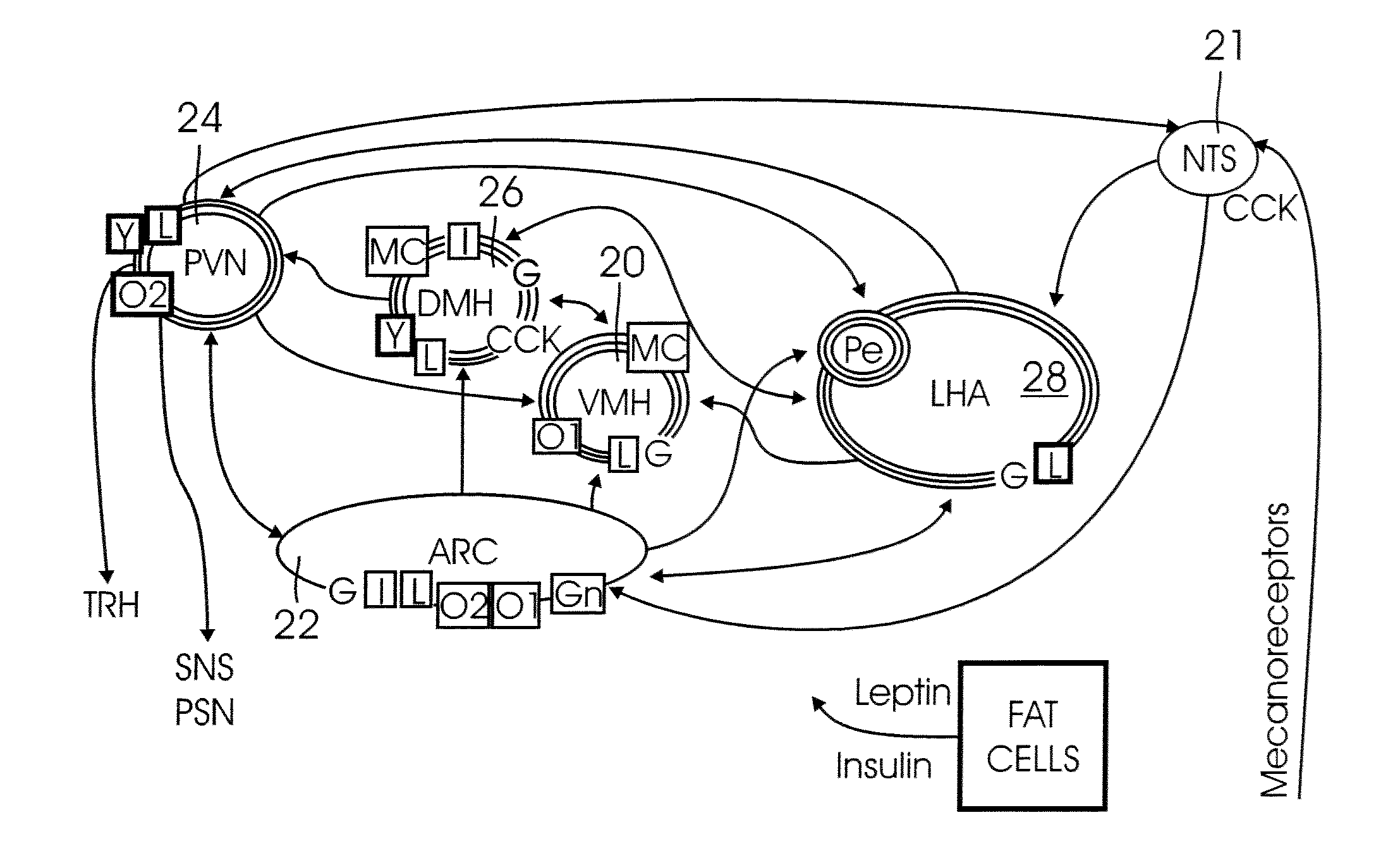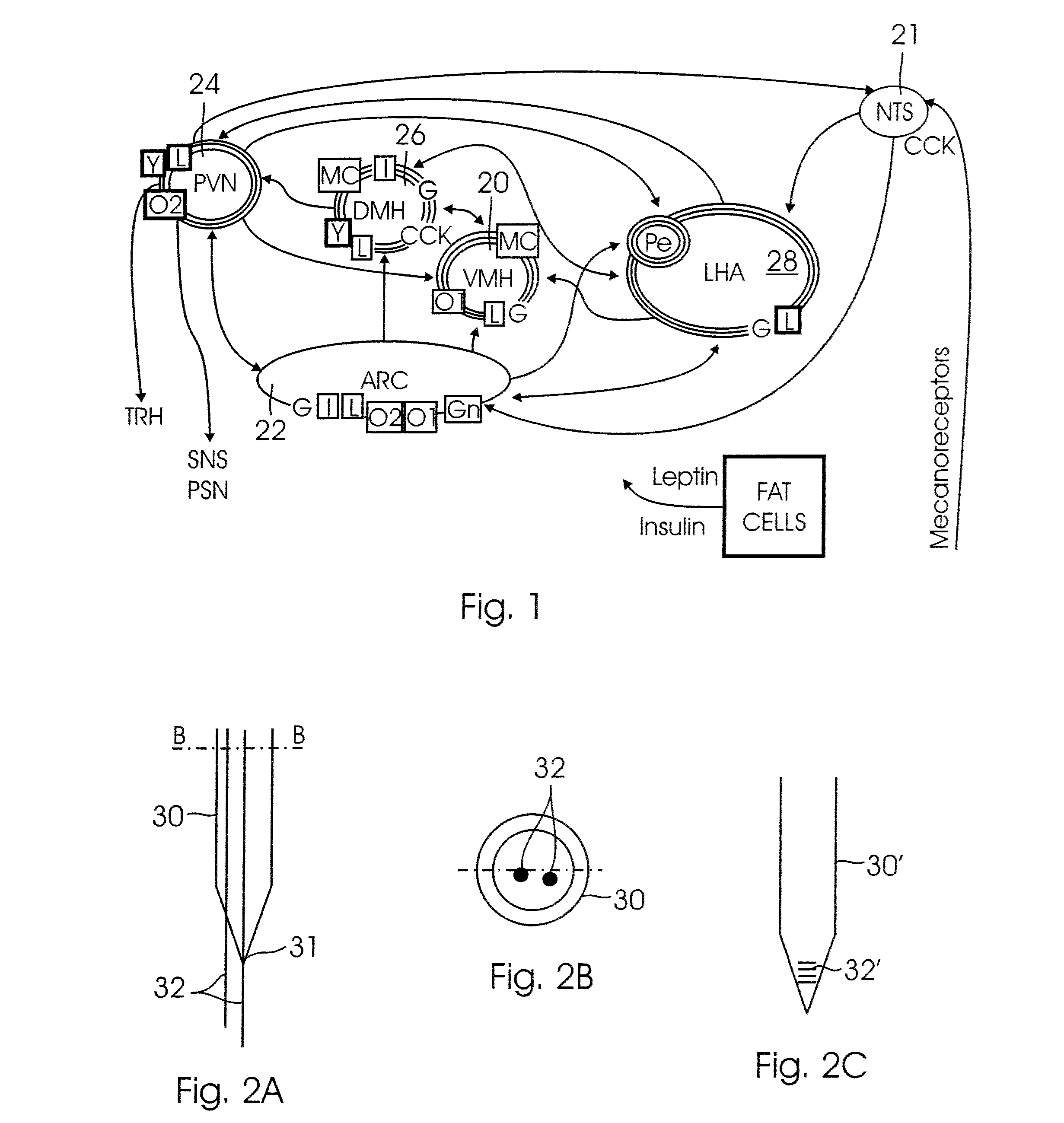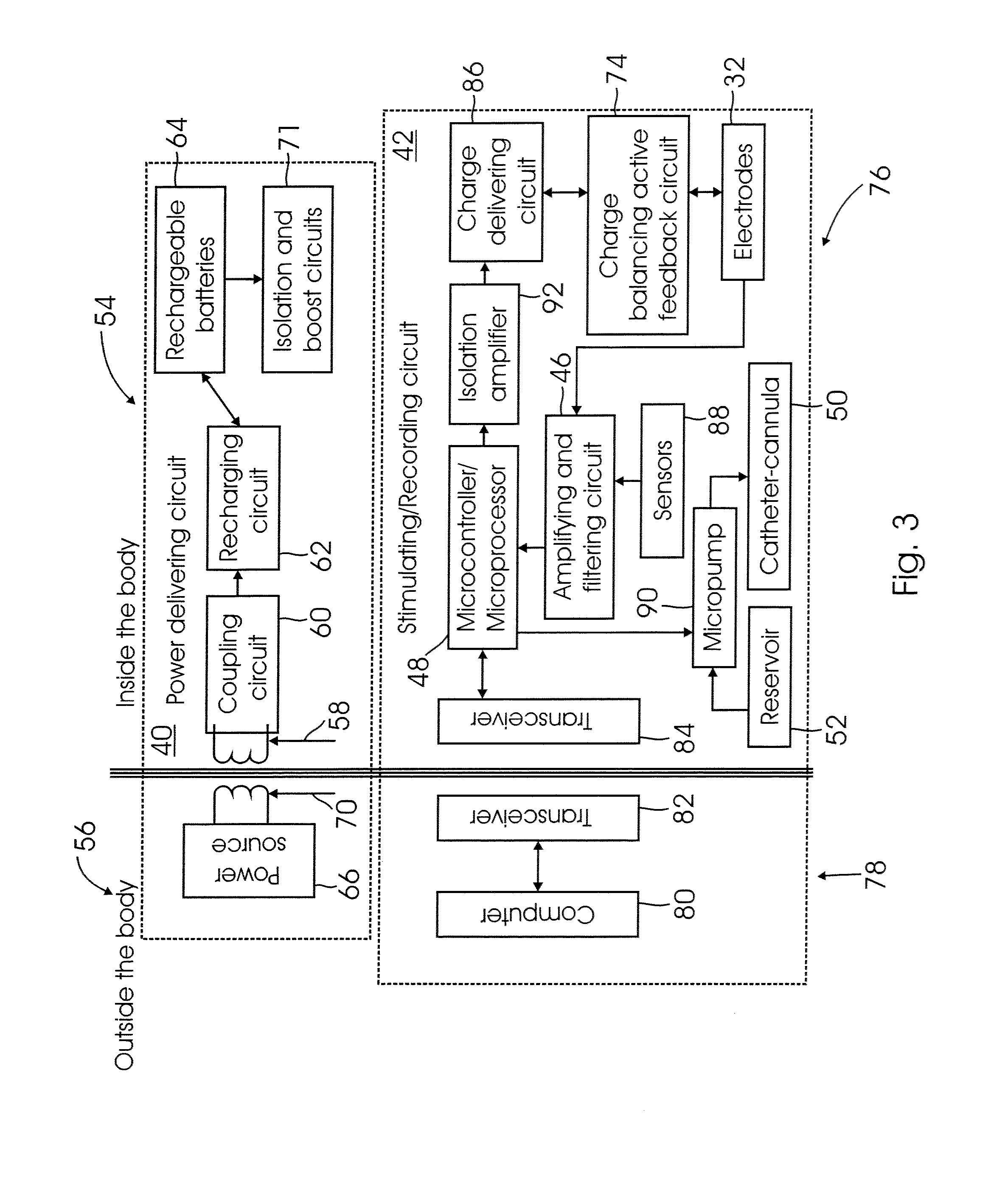[0021] A particular
advantage of the present invention is its ability to modulate brain-derived neurotrophic factor (BDNF), which is a molecule that, aside from playing an important role in the memory and learning process, also possesses neuroprotective and neuroregenerative properties. For example, higher levels of BDNF in the
hippocampus have been associated with increased
neurocognitive performance, while lower BDNF levels in particular brain regions have been associated with certain neurodegenerative diseases, such as Alzheimer's (low hippocampal BDNF) and Parkinson's (low BDNF in the
Substantia Nigra). Since BDNF protects neurons from dying, the low levels of BDNF in these regions results in decreased
neuron survival, which, in turn, contributes to the progression of these neurological diseases. Consequently, a therapy capable of increasing BDNF may ameliorate the symptoms of these diseases or even reverse the
neurological damage they effect. In addition to promoting neuronal survival and enhancing neuronal
plasticity, BDNF plays an important role in the control of the energy
homeostasis system.
[0022] It has been discovered that stimulation of the
hypothalamus can modulate the expression of BDNF, particularly in the
hippocampus, but also in other regions of the brain. In particular, by electrical stimulation of the
hypothalamus, BDNF mRNA (
messenger RNA) in the
hippocampus can be modulated (increased or decreased), depending on the frequency of the stimulation signal. The hippocampus is a
brain region that is intimately related to the memory and learning processes. It has also been shown that a higher cognitive performance correlates with higher concentrations of BDNF in the hippocampus. In accordance with the present invention, stimulation of the VMH at frequencies between 25 Hz and 100 Hz triggers an increase in hippocampal BDNF mRNA. In experiments with rats, for example, a stimulation frequency of 50 Hz yielded a 66%±14% increase in hippocampal BDNF mRNA. Conversely, stimulation of rats at 7 KHz showed a decrease in hippocampal BDNF mRNA by 33%±8%.
[0023] The invention may be carried out, in one embodiment, by implanting an
electrode into the hypothalamus (in particular into the VMH) and connecting the
electrode to an implanted container or box containing all the
electronics required to generate and control the electrical stimulation. The
electronics may advantageously be powered with a rechargeable battery, which may be recharged via induction using an external inductive recharging device. By setting the amount of time per hour that the stimulator is ON (i.e., by setting the
duty cycle), the average increase in energy expenditure and the average decrease in
food intake can be controlled.
[0024] The present invention is advantageous in that it modulates the brain's regulation of energy expenditure and food intake, while also modulating the brain'
s expression of a biological factor (BDNF) that promotes and enhances the protection and regeneration of neural cells, and that facilitates processes that are needed in memory and learning. Furthermore,
deep brain stimulation in the hypothalamus, in accordance with the present invention, can be used to increase, in a controlled and reversible manner, the average energy expenditure and food intake, as well as the BDNF concentration in several regions of the brain. In the case of
obesity, for example, the present invention offers an alternative to surgical options that are not reversible, cannot be controlled, and are relatively risky.
[0025] The present invention is a system and a method for stimulating the hypothalamus for modulating the energy expenditure and / or the BDNF expression of an individual. Electrical and / or chemical stimulation (local
drug delivery) can be delivered (directly or indirectly) into the hypothalamus to modify the hypothalamic neuronal activity of the individual. For electrical stimulation, a stimulation pattern is generated by a control device (e.g., a
microcontroller,
microprocessor, state
machine, or other suitable electronic device or circuit). The stimulation pattern is then converted into a stimulation current signal, and delivered to the hypothalamus via an implanted electrode(s). For chemical stimulation, a control device (e.g. a
microcontroller,
microprocessor, state
machine, or other suitable electronic device or circuit) controls a
micropump that delivers a
dose of a stimulating chemical from a reservoir into the hypothalamus, into a
cerebral ventricle, into the
cerebrospinal fluid, or into the afferents / efferents of the celiac ganglia, via a an implanted conduit, such as a
catheter. A sensor (which may be one or more of the electrodes functioning as a sensor, a separate implanted sensor, or a non-invasive indirect sensing device) may optionally be used to provide a feedback signal to the control device to automatically adjust the stimulation parameters. The system and method may include either electrical or chemical stimulation alone, or a combination of both types of stimulation.
[0026] In a first broad aspect, the present invention is a method for stimulating the hypothalamus for modulating the BDNF expression and / or the energy expenditure and food intake of a subject having a brain, wherein the method comprises the steps of (1) generating a stimulation pattern with a control device (such as a
microprocessor,
microcontroller, state
machine, or other suitable electronic device or circuit) from a predetermined set of stimulation parameters; (2) converting the stimulation pattern into a stimulation signal; and (3) delivering the stimulation signal to a selected part of the brain to stimulate the hypothalamus. The method may additionally comprise the steps of (4) generating a feedback signal from a sensor, wherein the feedback signal represents the value of a measured parameter; and (5) adjusting the stimulation parameters in response to the feedback signal. In a first specific embodiment, the stimulation signal is an electrical signal delivered to the hypothalamus or to the VMH-splanchnic pathway (e.g., to the afferents / efferents of the celiac ganglia) by an implanted electrode. In a second specific embodiment, the stimulation signal is a
chemical signal delivered to the hypothalamus by means of a dosage
regimen of an appropriate chemical. The chemical can be delivered either directly to the hypothalamus, or indirectly via a
cerebral ventricle, the
cerebrospinal fluid or the
blood circulation, and it can be delivered through an implanted conduit or
catheter, through a transcutaneous port, or by injection. In a third specific embodiment, the stimulation signal is a combination of an electrical signal and a
chemical signal, respectively delivered as described above.
 Login to View More
Login to View More  Login to View More
Login to View More 


